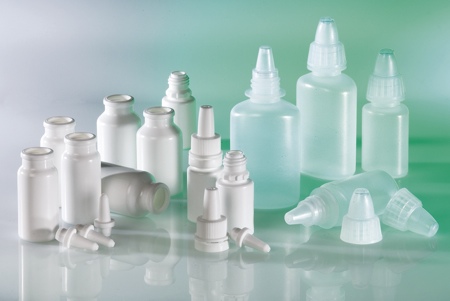Responding to market demands for higher production output in cleanroom injection moulding facilities, Sumitomo (SHI) Demag says it has resolved one of the key challenges in pharmaceutical injection moulding – how components cascade from multi-cavity moulds on all-electric systems.
The company's new ejector technology addresses the issue of plastic parts bouncing around, giving manufacturers the cycle time, precision and repeatability of a hydraulic system favoured in mass-production environments, while maintaining the optimal clinical conditions.
As well as lowering energy consumption, all-electric machines are usually regarded as the safer choice for any manufacturer producing hygiene critical components, such as medical syringe caps, needle guards and plungers or medical bottle caps. Until now, there was one snag; getting the components off the mould. Sumitomo (SHI) Demag has developed the ‘ejector’ technology to overcome this hurdle.
With a hydraulic system, plastic parts flow out of the mould in a cascade-like waterfall. In all-electric machines, this constant stream can be difficult to replicate, due to the difference in how the ejector accelerates/decelerates. Components do not come off the mould at the same time and the fast ejection can cause them to randomly bounce about. This means that components may ricochet into the opposite mould face and ‘tumble’ out of the mould, which can delay the mould closing.
'This can cause a real production bottleneck,' said Dave Raine, Technical Sales Manager. 'When producing essential yet disposable parts, which are commonplace in pharmaceutical packaging, mass production is critical. The equation is simple – the faster the machine pushes out quality components, the more likely you are to turn a profit. Quite literally, every second contributes towards profitability.'
Sumitomo (SHI) Demag has developed a new ejector and mould control algorithm, which synchronises the ejector forward speed with the mould open speed. This means that the point of ejection is effectively stationary. In other words, the ejector forward speed is exactly equal to mould open speed, allowing pharmaceutical components to be ejected without any inherent momentum.
The result is that the components appear to be suspended in mid-air for a split second before flowing, like a falling curtain, in a central line out of the mould space.

Components such as caps for medical bottles are essential to pharma manufacturers but they are low value high volume commodities
All-electric machines, such as Sumitomo (SHI) Demag’s IntElect range, have become a cleanroom standard due to the tight production requirement, said Raine. Direct drive machines offer major improvements in efficiency, including a reduction of up to 75% in energy usage during operation and improved repeatability and cycle times. Plus, tight tolerance requirements are key, and a combination of electric drives and digital control can turn injection moulding into a predictable and precise operation.
These newest systems also capture waste energy and convert it into electrical power for use elsewhere.
Another factor behind the switch to all-electric systems is the return on investment. Five years ago ROI for these machines was around eight years. The latest figures compiled by Sumitomo (SHI) Demag reveal that this has decreased to three years. The main drivers for this change have been the continued increase in energy costs, increased productivity and quality and a better understanding of the higher machine availability. Compared with the equivalent hydraulic machine, these all-electric models deliver an increased output of between 3–4%, which when based on a typical six-second cycle time and 24/5 operation, equates to an additional 144,000 cycles a year.
